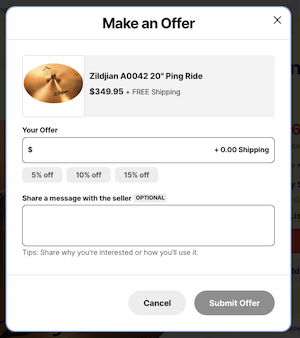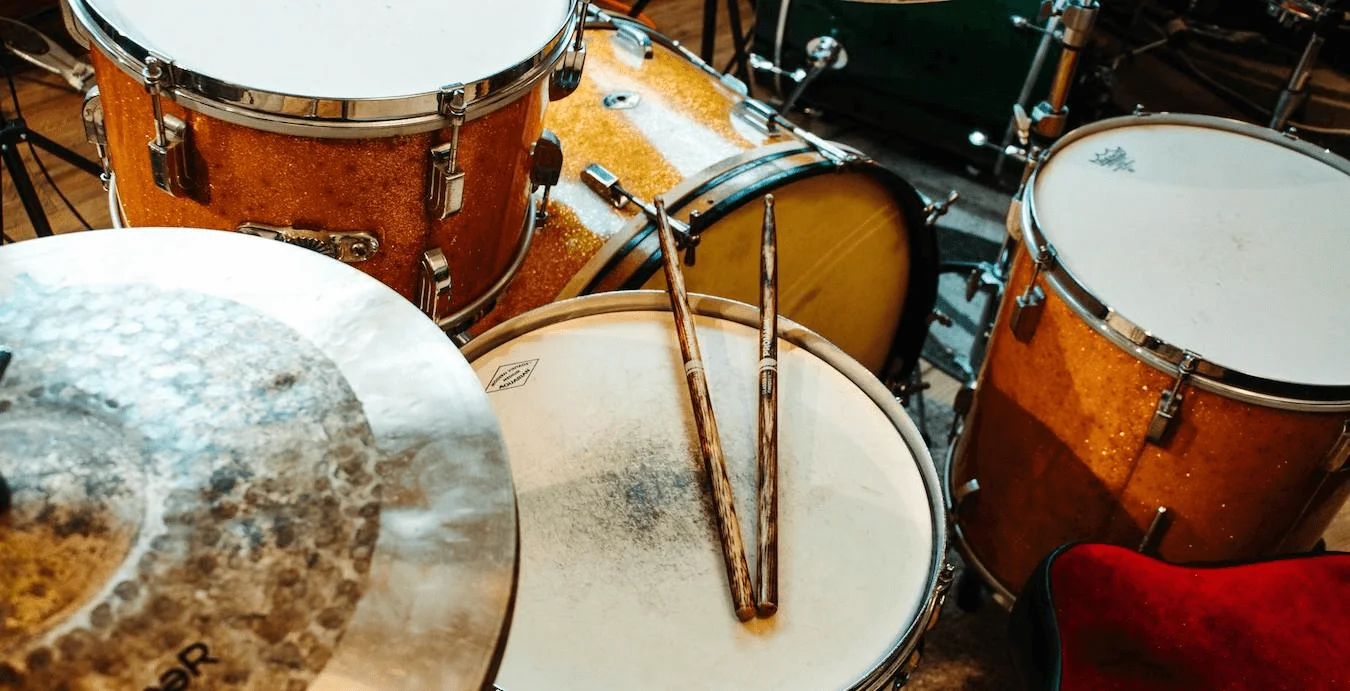Buying used can be a great way to get drum gear. You’ll save some money and may even find some products you can’t buy new anymore. Along with the upsides, however, buying used comes with a few extra risks. Sometimes items aren’t as advertised and you usually don’t know anything about the seller you’re buying from. That’s why we made this list – our 5 tips for buying used drum gear.
These tips are made primarily for those who don’t have a lot of experience buying used gear, but could also help just about anyone who’s in the market for used drum products. With these tips in mind, you should be able to buy your next great find with confidence!
On with the list! Here’s our 5 tips for buying used drum gear.
1. Know the Market Rate
The #1 rule of buying any used gear is knowing how much people are currently paying for a particular product. That doesn’t necessarily mean what people are selling it for. Those prices could be very different. Sometimes you’ll see a couple of listings of a certain model for sale on eBay or Reverb, each for around the same selling price. You might think, “OK, that’s what this item is worth”. However, the selling price is only part of the equation.
The value of anything is better determined by recent sales, if there are any. The good news is it’s super-easy to find that information. Using the two aforementioned websites – eBay and Reverb – you can easily check sales for specific models or more general product types. If you’re looking to buy a used Zildjian 20” ride cymbal, for instance, just search for it on those platforms. Then, after the search results pop up, filter the results.

On eBay, click to show all filters (if necessary), and simply click “Sold Items”. On Reverb, click on the filter button, go to the “Show Only” section, and click “Sold Listings”. The results will show specific details, including the final price paid and shipping rates.
You’ll still want to consider the other tips on this list, but knowing current rates gets your search off on the right foot. It’ll give you a good idea of an approximate price you can expect to pay. Maybe you’ll even learn you’re getting a great deal!
2. Budget For Add-Ons
A mistake many people make when buying used drums is not knowing what may need to be replaced or added. That could be a piece that’s not included in the sale, a broken part (both which should be made known by the seller), or it could be standard replacement accessories that are simply worn out. For example, drumheads and snare wires often need to be replaced after a purchase to get a good sound.
There are times when sellers sweeten a deal by installing fresh heads before listing, but that’s expensive to do. It’s more common to find used drums for sale with old heads. You can certainly use those heads, but your drums may not sound very good.
That’s why it’s a good idea to budget for any accessories before buying. $50 or so will usually cover two 14” snare drum heads and snare wires. Drum set heads cost quite a bit more. A 5-pc head pack can easily run over $100, depending on the brand and model. And don’t forget sticks and dampening gels!
3. Practice Offer Etiquette
Offering less than the asking price is something buyers have been doing for thousands of years. While it’s less common in modern times, you’ll still see negotiation, particularly when buying used products. Most deals on Craigslist, for example, involve some back and forth between buyers and sellers. There’s usually wiggle room added to listing prices just for negotiation purposes. Ebay and Reverb have even added “Make an Offer” options to their platforms.

How does that work? When a buyer creates an online listing on eBay or Reverb, they can choose to accept offers if they’d like. Not all sellers want to accept offers, but it can be a nice way for them to move gear a little faster. From a buyer’s perspective, it can be a real money saver. You should usually try to get an item for less if the buyer is willing. That being said, there is a bit of etiquette to be aware of.
Offering prices well below value can actually make a seller less likely to budge on the price, simply because their first impression is of a buyer who’s going to grind for every penny. Any reasonable counter-price a seller sets will likely be answered by another unreasonable offer. Sellers tend to get defensive when met with a lowball offer. It’s better to use your research from Tip #1. The seller almost certainly has done the same.
Unless the listing price is well outside the range of recent sales, it’s advised to be reasonable about making offers. Offering 10% – 25% less than recent sale prices is seen by most buyers as a “legit” offer. They may not take it, but at least you have a good start to a potential sale, and the seller is unlikely to just flat-out say “NO!” and shut down. Maybe they’ll split the difference with you and you’ll both go away happy.
4. Remember Warranties
One of the biggest downsides of buying used drum gear is not getting a warranty. New instruments typically come with warranties ranging from 1 to 5 years, and some even last a lifetime. However, those warranties are only for original owners. When an item is sold as used, the buyer is usually out of luck if something breaks.
The importance of warranties varies though, depending on both the player and the product. If you play aggressive styles of music, you’re more prone to break a piece of gear. Drummers who play soft jazz don’t really have too much to worry about. Name brands tend to be more reliable than off-brands, as well, making warranties a bit less of a concern.
Then there’s the product type. Of all drum products covered by warranties, cymbals are the type most commonly replaced. Here again, hard hitters are more at risk when buying used, especially thin crash cymbals and chinas. Unless the price is really great, it may be better to buy a new product that includes a factory warranty.
Drum and hardware parts are more easily replaced than cymbals, especially when it comes to name brands. If you break a drum lug nut or strip a pedal bolt on something used, you can usually get either an exact replacement or something that works just as well. While it’s not 100%, it can give you some peace of mind when buying used accessories.
5. Consider Seller Ratings
Our final tip is to consider seller ratings, particularly on eBay and Reverb. These ratings may not be as important as the product or price, but they certainly shouldn’t be ignored. Not all sellers treat their customers well. Of course, look at the number of stars a seller has. That’s obvious. Beyond that, check out the accompanying written reviews, so you can see more detailed information about the seller’s service.
What if a seller has zero ratings and reviews? That’s a trickier situation. Everyone has to start off with no reviews, so it doesn’t mean you should avoid buying from those sellers. Rather, check the seller’s return policy. If a seller accepts returns, you can feel more comfortable about the purchase. eBay and Reverb have fairly strong buyer protections, as well.
In the case of sellers having a very small number of reviews and a lower overall rating, try to read through what other customers have written. Despite the old saying, “the customer is always right”, there are unreasonable buyers out there. Sometimes a seller will have one review on eBay or Reverb – a single star with a bad write-up. When you read through the reason, you may find out the buyer ordered the wrong item or the shipping company caused some damage. Those situations may not even be the fault of the seller.
As we mentioned, seller reviews are just one aspect of a potential purchase. They usually shouldn’t make or break deals on their own, but the information can be valuable.
Wrap-Up
Those are our 5 tips for buying used drum gear. Used gear can be a great way to get high-quality instruments at a fraction of the original price, but there are downsides. Hopefully, these tips can help you save some money, buy with confidence, and start playing your next pre-owned find!
By Peter Treuden – About the Author
Got a used snare drum, but need to change the bottom head? Check out How to Change a Bottom Snare Head, where you can learn how!

